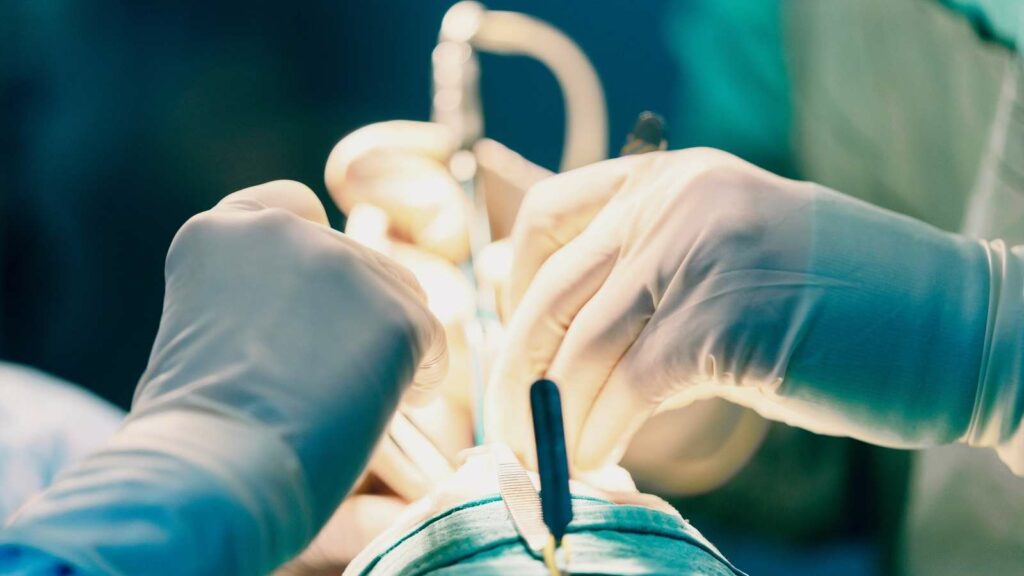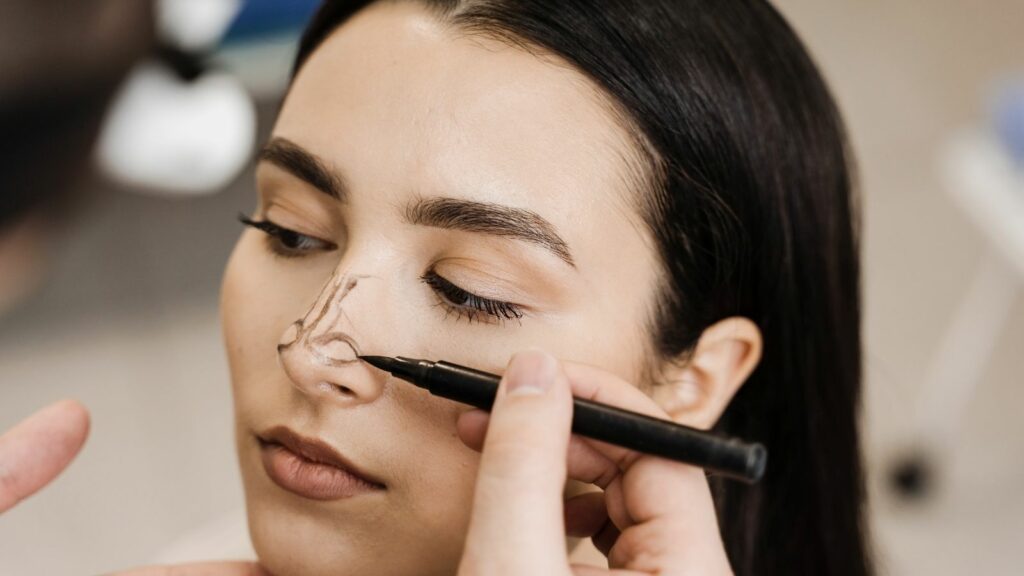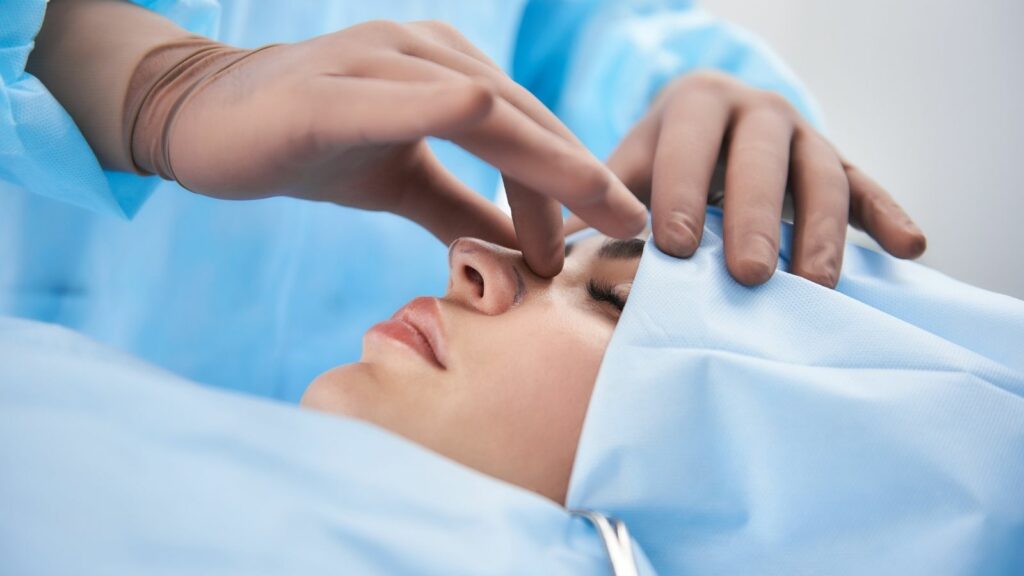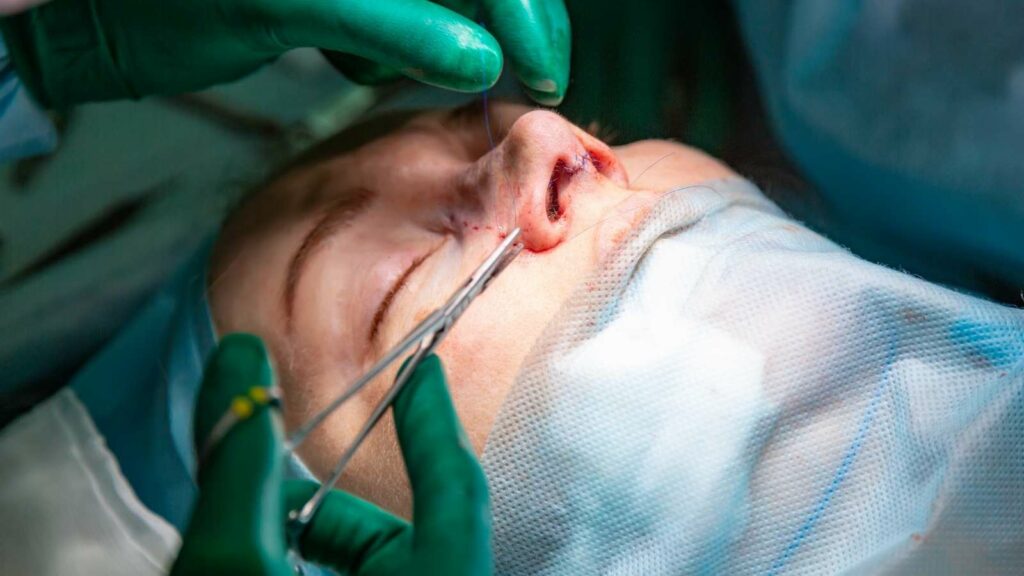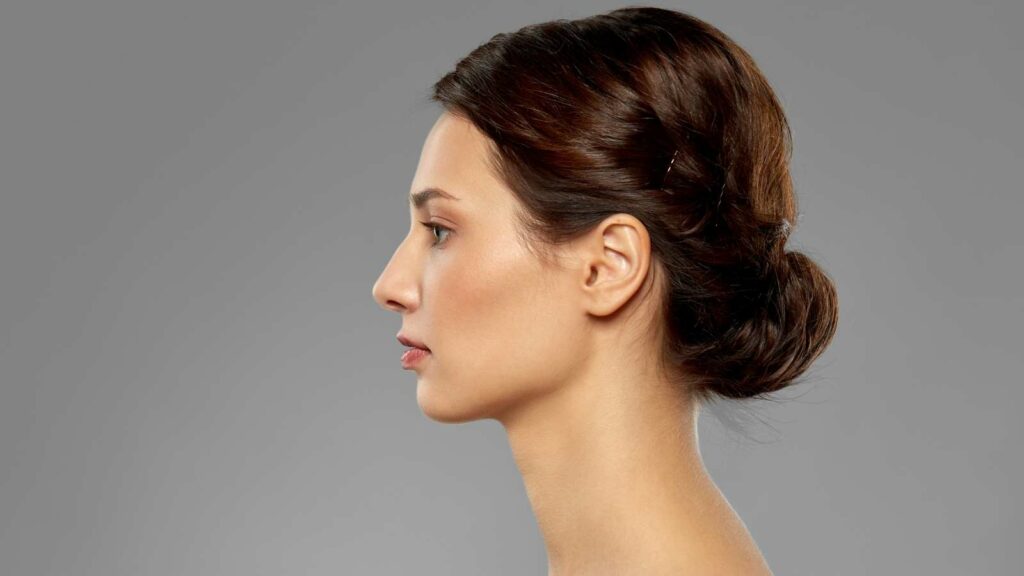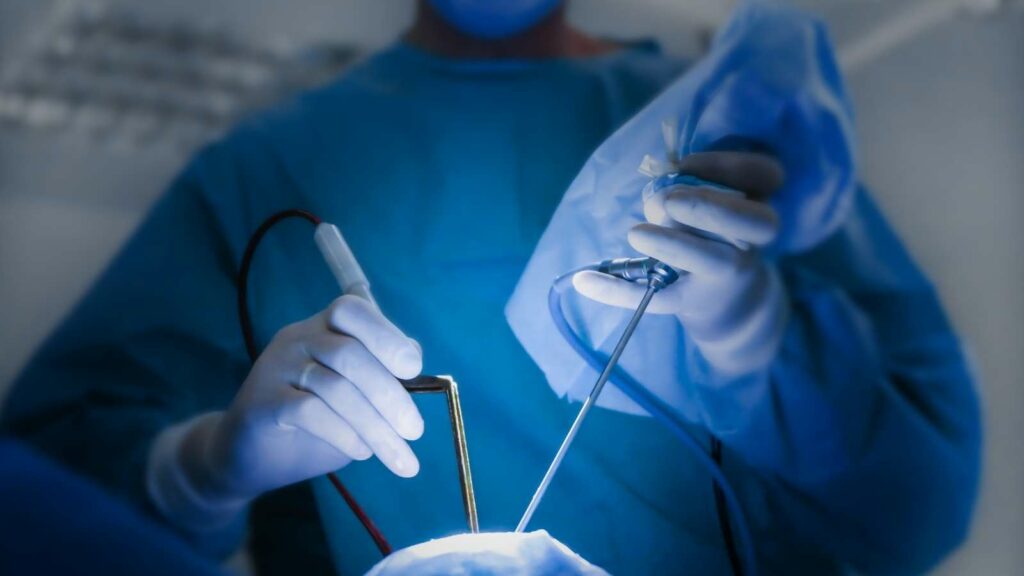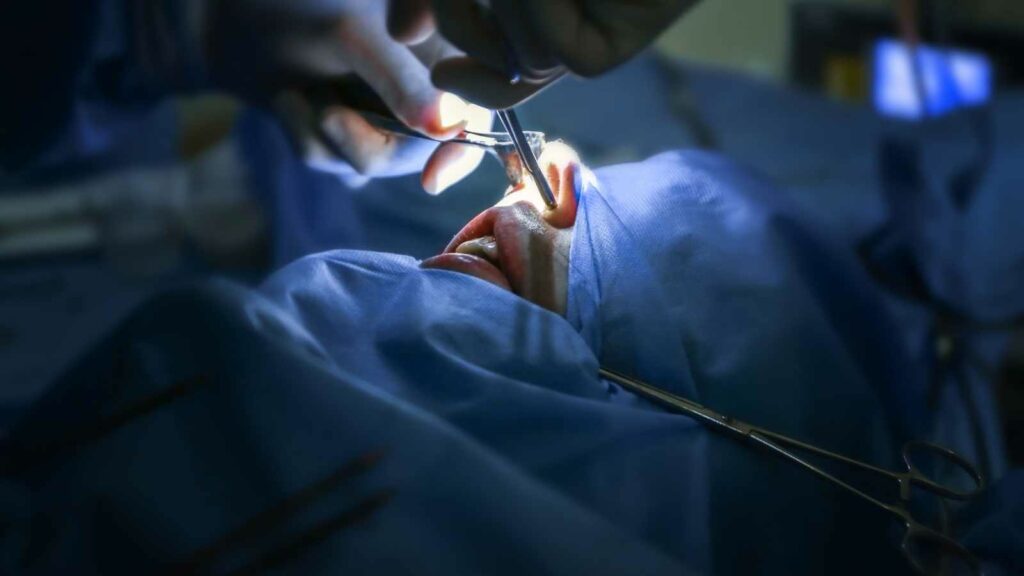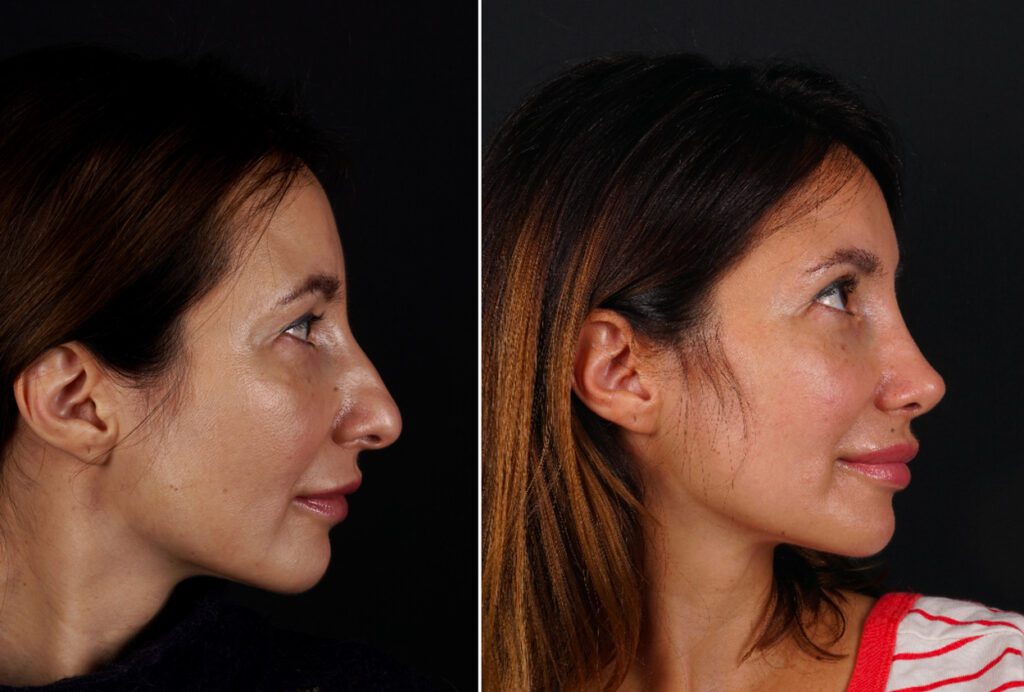Septoplasty in Turkey is a surgical procedure performed to correct a deviated septum, improving airflow and resolving chronic breathing difficulties. It is commonly recommended for patients with nasal obstruction, snoring, or recurrent sinus infections caused by structural deviations.
Septoplasty cost in Turkey generally ranges between 3,000 and 5,000 euros, depending on the hospital, surgeon’s expertise, and the complexity of the deviation. Many clinics offer comprehensive packages that include surgery, anesthesia, hospitalization, and post-operative care.
Best septoplasty surgeons in Turkey specialize in functional nasal surgery, ensuring long-term breathing improvements while maintaining nasal structure. Advanced techniques are used to reposition or remove deviated cartilage and bone, often combined with turbinate reduction if needed.
Septoplasty recovery in Turkey is relatively quick, with most patients returning to normal activities within 1–2 weeks. Post-operative improvements include enhanced airflow, reduced sinus problems, and better sleep quality, making the procedure highly effective and beneficial.
What is a septal deviation and why might Septoplasty be required?
In the center of the nose, there is a wall made of cartilage at the front and bone at the back, separating the two nostrils. This wall is called the “nasal septum.” In an ideal nasal structure, this wall should be exactly at the midline and extend straight. This allows air to pass evenly and unobstructedly through both nostrils.
However, in the case of septal deviation, this internal wall bends to one side, shifts, or curves in an “S” shape. This narrows the airway on the side where the wall is deviated, making it harder for air to pass. In fact, a significant portion of the population has some degree of septal deviation. Most people live their lives unaware of this. The problem arises when the deviation begins to noticeably interfere with breathing. Septoplasty is a surgical procedure designed to correct this functional issue, aiming to fix the anatomical abnormality that impedes breathing.
What are the common symptoms that may indicate the need for Septoplasty?
As the degree of septal deviation increases or combines with other issues like allergies, various symptoms can occur. If these symptoms start to negatively affect your daily life, it might be a good idea to consult a specialist about septoplasty. The most common symptoms that bring patients to the doctor include:
- Persistent or one-sided nasal obstruction
- Night-time congestion causing snoring
- Recurring sinus infections (sinusitis)
- Frequent and hard-to-stop nosebleeds
- Postnasal drip and a sensation of pressure in the face
- Unexplained headaches
- Noisy breathing during sleep or sleep apnea
- Shortness of breath and congestion during physical activity
- Reduced sense of smell
What causes septal deviation and can it be corrected with Septoplasty?
There are two main causes underlying the curvature of the septum. While these causes explain how the condition develops, they do not change the treatment approach. Regardless of origin, a septal deviation causing symptoms can be effectively corrected with septoplasty. The causes are:
Congenital Causes: A person may be born with a deviated septum. This can result from pressure on the nose during fetal development or birth. It often goes unnoticed in childhood and becomes more prominent during adolescence as the face develops.
Acquired (Traumatic) Causes: Any trauma to the nose at any point in life can displace or fracture the septum. Sports injuries, falls, car accidents, or fights are the most common causes. Even a minor blow in childhood, sometimes forgotten, can result in noticeable deviation later in life.
Are there non-surgical alternatives to Septoplasty?
Yes, before deciding on septoplasty or for patients with mild symptoms, there are some methods that can be tried to help manage symptoms, though they do not correct the deviation itself. These treatments only temporarily alleviate discomfort caused by the underlying anatomical problem. If these methods are insufficient or a permanent solution is sought, septoplasty will be the most appropriate option. Non-surgical treatments include:
- Nasal corticosteroid sprays
- Antihistamine medications (if allergies are present)
- Decongestant sprays or tablets (for short-term use)
- Nasal irrigation with saline
- External nasal strips (especially for night use)
- Humidifying the environment with humidifiers
In which situations is Septoplasty considered a medical necessity?
Septoplasty is not just a comfort surgery—it is a functional necessity when certain criteria are met. Health authorities and insurance companies generally look for the following conditions when evaluating the medical necessity of the procedure. These criteria show why the surgery is an important health intervention:
- Chronic and severe airway obstruction not responding to medication
- Recurring or chronic sinusitis proven to be due to septal deviation
- Uncontrolled and frequent nosebleeds
- Septal deviation interfering with another essential nasal surgery (such as sinus or tumor surgery)
- Need to improve CPAP tolerance in patients with obstructive sleep apnea
How should a patient prepare for Septoplasty?
The success of the surgery is not only due to the surgical team’s skill but also depends on the patient’s adherence to the preoperative preparation process. The steps taken in this process are crucial to minimize risks and speed up recovery. Preoperative considerations include:
Medical Evaluation: Blood tests and an anesthesia evaluation will be performed to assess your general health before surgery.
Medication Review: It is vital to inform your doctor of all medications, vitamins, and herbal supplements you are taking.
Discontinuing Blood Thinners: Some medications that increase the risk of bleeding need to be stopped 1-2 weeks before surgery. These include:
- Aspirin
- Ibuprofen and similar non-steroidal anti-inflammatory drugs
- Some herbal supplements (Ginkgo biloba, garlic, ginseng)
- Vitamin E
- Fish oil
**Quitting Smoking and Alcohol:** Smoking seriously impairs wound healing and increases the risk of infection. Stopping smoking at least a few weeks before surgery significantly reduces the risk of complications.
Fasting: Because you will be under general anesthesia, you must stop eating and drinking after midnight or at the time specified by your doctor before surgery.
Support Planning: Arrange for a relative or friend to take you home from the hospital on the day of surgery and help you the first night.
What happens step-by-step during a Septoplasty procedure?
One of the topics patients are most curious about is what happens on the operating table. Contrary to popular belief, septoplasty is not a traumatic procedure where the nose is “broken.” Instead, it is a precise and protective surgery performed entirely through the nostrils. Therefore, there are usually no incisions or bruising on the face.
The operation is performed under general anesthesia, so you are completely asleep. The surgeon makes a small incision in the septal mucosa (the lining inside the nose) through one of the nostrils. Then, this lining is carefully separated from the underlying cartilage and bony framework. This is done with great care to preserve the lining, which is vital for breathing and sense of smell. Once lifted, the surgeon accesses the crooked cartilage and bone causing the blockage. The surgeon reshapes, straightens, or strategically removes small portions to open the airway. The goal is to position the septum as close to the midline and as straight as possible. After the correction, the mucosa is repositioned, and the incision is usually closed with dissolvable stitches.
How long does Septoplasty take, and what type of anesthesia is used?
A septoplasty procedure generally takes between 30 and 90 minutes, depending on the degree and complexity of the deviation. If an additional procedure such as turbinate reduction is performed at the same time, it may take a bit longer. For the patient’s comfort, safety, and to ensure they feel nothing during the procedure, the surgery is almost always done under general anesthesia. Septoplasty is typically an outpatient procedure, meaning you can usually go home the same day unless there is a serious complication.
What are the most important rules for home care after Septoplasty?
Proper care after surgery is just as important as the surgery itself. Following certain rules in this period will speed up recovery and help prevent potential problems. Here is a list of dos and don’ts:
Do:
- Rest and sleep with your head elevated on 2-3 pillows.
- Gently clean your nose with saline sprays as recommended by your doctor.
- If you need to sneeze, keep your mouth open.
- Drink plenty of water and eat fiber-rich foods to prevent constipation.
- Take prescribed painkillers and (if given) antibiotics as directed.
- Attend your follow-up appointment.
**Don’t:**
- Do not blow your nose for at least one week.
- Avoid lifting heavy objects, straining, or vigorous exercise for at least 2 weeks.
- Do not take aspirin or ibuprofen without your doctor’s approval.
- Do not bend over in a way that puts pressure on your face.
- Avoid smoking and alcohol as they slow healing.
- Do not insert cotton swabs or any objects into your nose.
After Septoplasty, in which cases should you contact your doctor immediately?
Most recovery processes go smoothly. However, some symptoms may indicate a situation that requires urgent medical attention. If you experience any of the following, contact your surgeon or the nearest emergency department immediately:
- Unstoppable, bright red, and severe nosebleed
- Fever above 38.5°C or chills
- Severe pain that does not respond to painkillers and gets worse
- Severe breathing difficulty beyond expected congestion
- Severe headache, neck stiffness, or confusion
- Continuous watery, clear discharge from the nose
What are the potential benefits of Septoplasty?
After a successful septoplasty, patients experience a holistic improvement in quality of life. Beyond relieving nasal obstruction, a range of positive effects occur:
- Comfortable and effortless breathing
- Better quality, restful sleep
- Significant reduction in snoring
- Resolution of recurring sinusitis and headaches
- Improved exercise performance
- Enhanced sense of smell and taste
- Stopping frequent nosebleeds
What are the risks and potential complications associated with Septoplasty?
Septoplasty is a highly successful and very safe surgery. However, as with any surgical procedure, there are some rare risks. The likelihood of these risks is even lower when performed by an experienced surgeon:
- Excessive bleeding (post-operative)
- Infection
- Septal perforation (permanent hole in the septum)
- Septal hematoma (blood accumulation in the septum)
- Temporary or permanent changes in the sense of smell
- Unwanted changes in nose shape (very rare)
- Temporary numbness in the upper front teeth or palate
What are the main differences between Septoplasty and Rhinoplasty?
These two surgeries, often confused by patients, are completely different in terms of purpose. Understanding the difference will help clarify your own expectations.
Septoplasty: This is a functional surgery. Its sole purpose is to improve breathing by correcting septal deviation inside the nose. It does not alter the external appearance of the nose and is considered a medical necessity.
Rhinoplasty (Nose Aesthetics): This is an aesthetic surgery. Its main goal is to reshape the nasal bone, cartilage, and skin to make the nose more aesthetically pleasing according to the patient’s expectations.
What is Septorhinoplasty and when is it performed together with Septoplasty?
As the name suggests, septorhinoplasty is the combination of septoplasty and rhinoplasty in a single surgical session. This combined approach is preferred if a patient experiences both breathing difficulties due to septal deviation and is dissatisfied with the external appearance of their nose. For example, it is ideal for someone with nasal obstruction as well as a dorsal hump or curvature. Doing both procedures at once means only one anesthesia, one surgery, and most importantly, one recovery period for the patient. This results in significant efficiency in both time and cost.
How much does Septoplasty Cost in Istanbul/Turkey?
Septoplasty in Turkey generally costs between $2,500 and $5,000 USD, depending on the severity of the septal deviation, the hospital (standard vs luxury), and the surgeon’s experience.
For simpler cases in mid-range clinics, prices often start around $1,500-$2,500 USD; more complex cases, or ones done in more upscale or internationally accredited facilities, can push toward the upper part of that range or higher.
Frequently Asked Questions
Is septoplasty an aesthetic surgery?
No, septoplasty is not primarily an aesthetic surgery. The main purpose of this operation is to correct deviations in the “septum” wall made of cartilage and bone inside the nose, which separates the two airways. The aim is to improve the breathing function. In other words, it is a health procedure to help you breathe better. However, it can sometimes be performed together with rhinoplasty (cosmetic nasal surgery).
How long does recovery take after septoplasty?
The first few days are usually the most challenging. Nasal packs are removed within 1-2 days. Most people can return to social life or desk jobs within a week. However, it takes several weeks to feel “completely healed.” It is especially important to protect your nose from trauma and avoid strenuous exercise during the first month. It takes time for your body to complete the delicate healing inside.
Does the voice change after septoplasty?
This is one of the most frequently asked questions by patients. Generally, there is no permanent change in your voice after septoplasty. In the initial period after surgery, your voice may sound slightly different or “nasal” due to swelling and congestion. This is similar to how a blocked nose affects your voice. When the swelling subsides and normal breathing resumes, your voice will return to normal.
What are the risks of septoplasty?
As with any surgical intervention, septoplasty has some risks. These include bleeding, infection, and reactions to anesthesia. Specific to the surgery, rare cases may include septal perforation (hole), slight changes in nose shape, or failure to achieve the desired breathing relief. However, these risks are very low in experienced hands.
How long does swelling last after septoplasty?
Noticeable swelling after septoplasty generally decreases within the first few weeks. By the end of the first week, most of the edema has subsided. However, it may take 1 to 3 months for the internal tissues of the nose to fully return to normal and for minimal swelling to disappear. This process varies from person to person, so it is best to be patient and follow your doctor’s advice.
What are the complications of septoplasty?
Complications are rare but should be known. The most common is post-operative bleeding. Other rare complications include septal hematoma (blood accumulation), abscess formation, or saddle nose deformity (collapse of the nose due to weakened support tissue). As mentioned, these are very uncommon in the hands of an experienced surgeon.
Can you sleep on your side after septoplasty?
For the first week after surgery, we recommend sleeping on your back with your head elevated above heart level using double pillows as much as possible. This position helps reduce swelling and the risk of bleeding. Sleeping on your side may put pressure on your nose and increase swelling, especially in the early days. After a week, you can switch to more comfortable positions with your doctor’s approval.
Is sinusitis common after septoplasty?
Actually, the opposite is intended. Septoplasty opens the nasal airway, allowing better ventilation of the sinuses and thereby reducing the risk of chronic sinusitis. In the initial post-operative period, temporary sinus congestion can occur due to swelling and crusting during healing. However, in the long run, a properly performed septoplasty should help relieve your sinusitis attacks.

